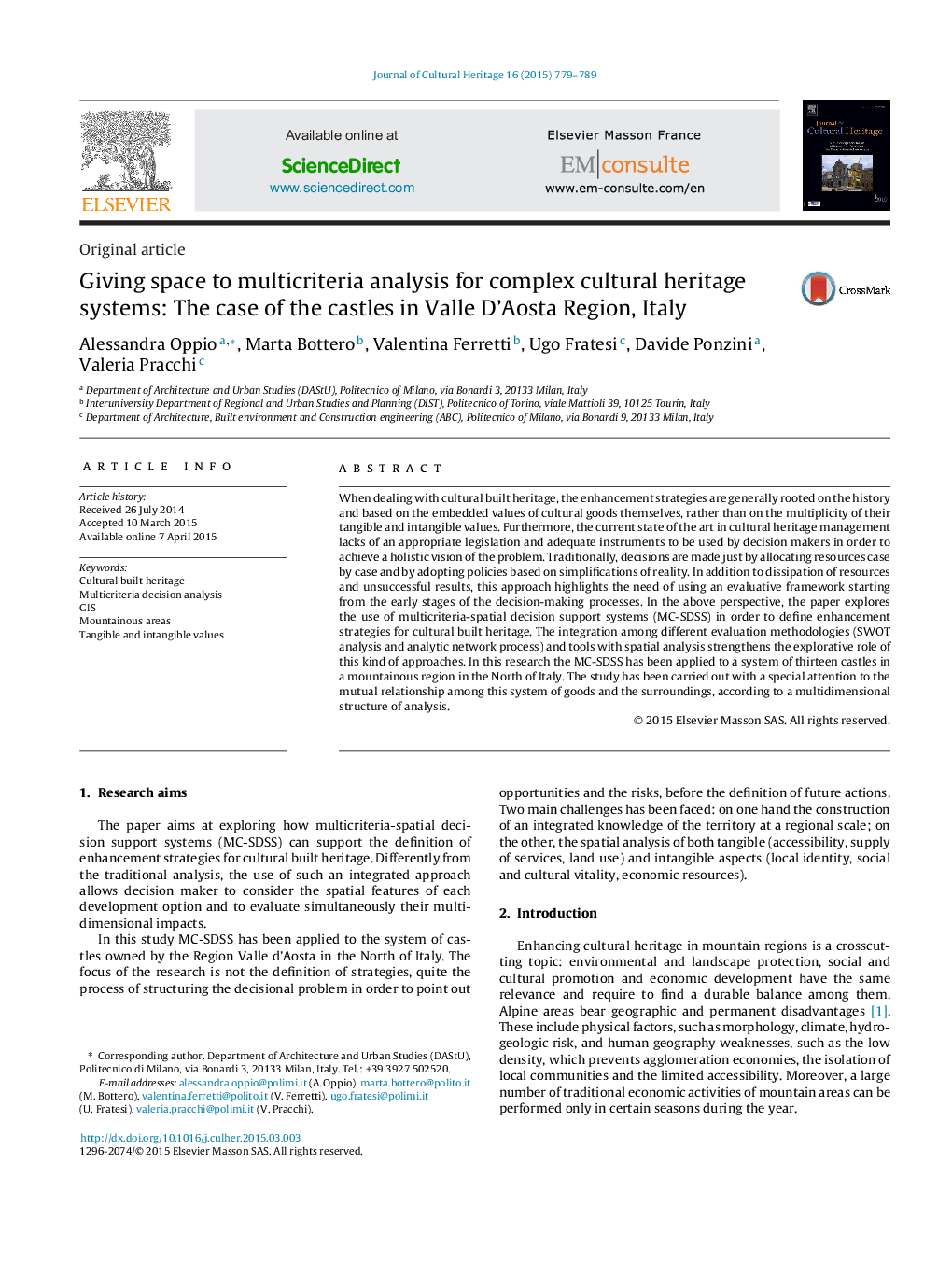| Article ID | Journal | Published Year | Pages | File Type |
|---|---|---|---|---|
| 1037963 | Journal of Cultural Heritage | 2015 | 11 Pages |
When dealing with cultural built heritage, the enhancement strategies are generally rooted on the history and based on the embedded values of cultural goods themselves, rather than on the multiplicity of their tangible and intangible values. Furthermore, the current state of the art in cultural heritage management lacks of an appropriate legislation and adequate instruments to be used by decision makers in order to achieve a holistic vision of the problem. Traditionally, decisions are made just by allocating resources case by case and by adopting policies based on simplifications of reality. In addition to dissipation of resources and unsuccessful results, this approach highlights the need of using an evaluative framework starting from the early stages of the decision-making processes. In the above perspective, the paper explores the use of multicriteria-spatial decision support systems (MC-SDSS) in order to define enhancement strategies for cultural built heritage. The integration among different evaluation methodologies (SWOT analysis and analytic network process) and tools with spatial analysis strengthens the explorative role of this kind of approaches. In this research the MC-SDSS has been applied to a system of thirteen castles in a mountainous region in the North of Italy. The study has been carried out with a special attention to the mutual relationship among this system of goods and the surroundings, according to a multidimensional structure of analysis.
